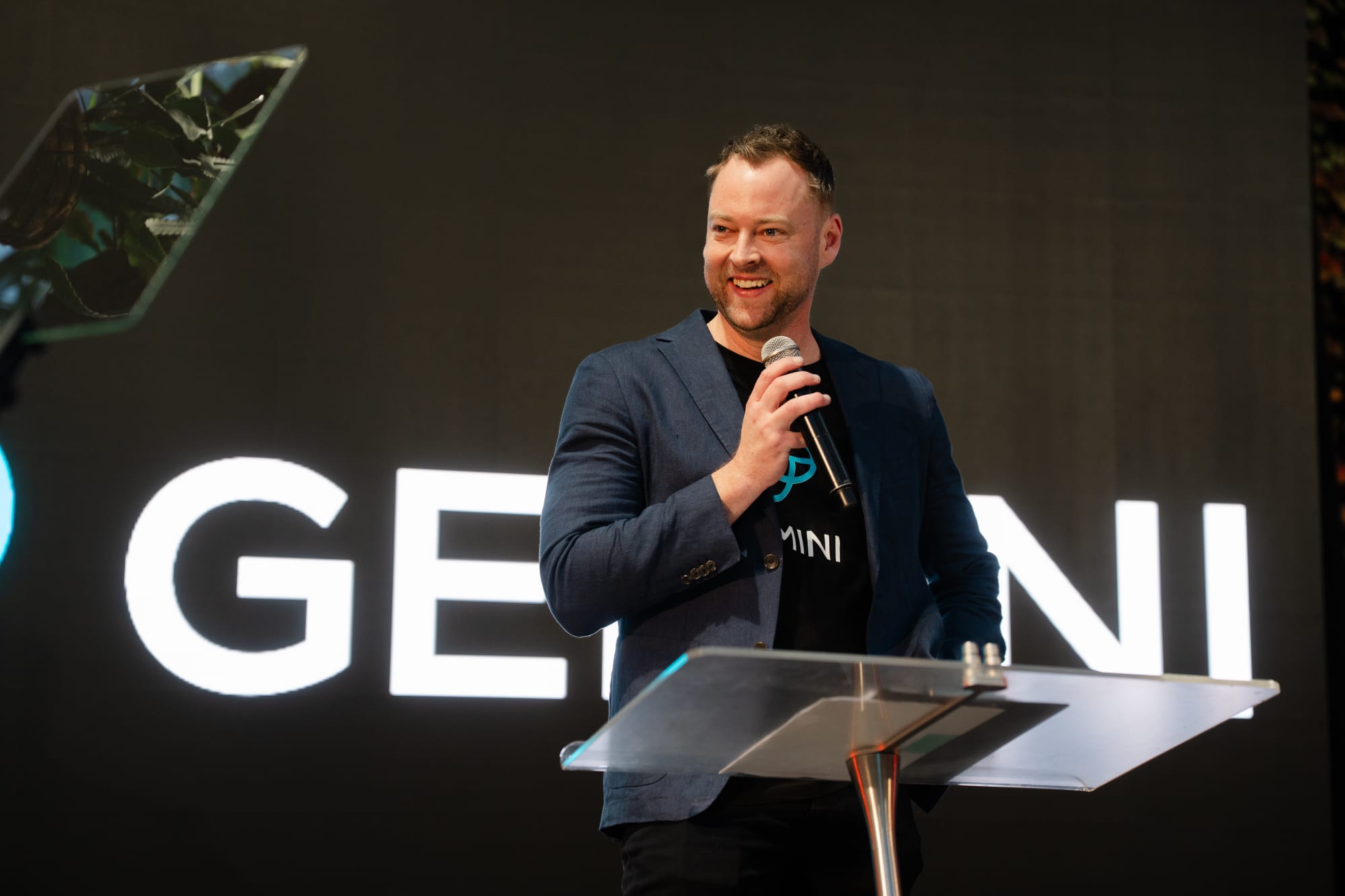Invest
25 cryptocurrencies you should know about (Part 1)
If you’re ready to look beyond market leaders like bitcoin and ethereum, here are 25 cryptocurrencies you might want to know about.
25 cryptocurrencies you should know about (Part 1)
The world of cryptocurrencies and decentralised finance can be hard to wrap your head around. The only constant here is the blockchain, as not every cryptocurrency looks to serve the same needs or solve the same problems.
Still, if you’re considering building out your portfolio of cryptocurrencies with holdings, it can pay to think outside the box and away from obvious inclusions like bitcoin and ethereum.
While none of the cryptocurrencies on this list has exploded in value to quite the same degree as market leaders like the aforementioned, many of them are contending for the coveted third-place spot in the market.
With that in mind, here are 25 cryptocurrencies you might want to consider.
Cardano (ADA)
Named after Italian polymath Gerolamo Cardano, Cardano is one of the most talked-about competitors to ethereum. Like the latter, Cardano is a decentralised blockchain platform that will eventually support smart contracts.
Unlike ethereum, however, Cardano is based on a proof-of-stake protocol rather than a proof-of-work one. This means that in practice, Cardano is significantly more energy-efficient than ethereum.
In a world where the environmental costs associated with the maintenance of blockchain networks is becoming increasingly controversial, this aspect of Cardano is one of its biggest drawcards for potential investors.
Unlike many older blockchains, Cardano utilises a two-layer structure. One layer is reserved for ADA transactions, while the other will solely handle smart contracts. This is expected to make the network more efficient as it scales in size.
Finally, Cardano is also distinguished from other blockchains through its emphasis on evidence-based and peer-reviewed improvement.
All upgrades to the network go through rigorous academic scrutiny before being implemented, which is intended to ensure the network continues to get more secure, robust and stable over time.
Solana (SOL)
Solana is a blockchain network that tries to solve the same problems as ethereum, but opts to do so using different methods.
Like ethereum, Solana is more than a decentralised ledger. It’s a foundation for decentralised apps and the trading of digital assets.
However, Solana differs from ethereum in a number of ways. The most notable of these is that it uses a proof-of-history model for consensus rather than a proof-of-work model (which ethereum currently uses) or a proof-of-stake one (which ethereum is in the process of transitioning towards).
This unique detail adds cryptographic clocks and timestamps into the mix, allowing for a trust-less ordering of what happened by those connected to the network.
Beyond that specific twist on the format, Solana looks to stand out in the crowded crypto space by refusing to sacrifice speed for scalability.
Ethereum is currently the most popular blockchain for decentralised applications. Unfortunately, as its popularity has grown, transaction speed and fees have struggled to keep up. Solana is positioning itself from the get-go as an alternative that’s already solved those problems around scalability.
The network claims to already support over 400 projects in the DeFi and NFT space, a feat it attributes to lower fees and faster transaction speeds.
Those investing in SOL are betting that a blockchain network that addresses ethereum’s scalability shortcomings like Solana does will be able to grow fast enough that it can compete with ethereum regardless of when it eventually gets around to dealing with the issues it has.
Polkadot (DOT)
Polkadot is a platform that uses an ecosystem of several blockchains to surpass the limits of what a single or dual chain solution can deliver in terms of decentralised apps.
Polkadot pitches itself as a decentralised blockchain platform that promises to support decentralised applications and smart contracts. However, it has a number of key differences from market leaders like ethereum.
Rather than a single or dual-layer solution, Polkadot uses a bridge-like protocol to operate a number of different blockchains in parallel. In doing so, it’s able to leverage the strengths of each chain while covering its collective weaknesses.
In theory, this platform can support an infinite amount of interconnected blockchains called parachains. Eventually, it’ll also support cross-chain transactions via a bridge to the ethereum and bitcoin networks.
Right now, it offers decentralised app developers lower transaction fees, easier network upgrades, a form of collectivised security.
Polkadot’s advocates see the long-term future of their network as one that connects the dots between a fragmented crypto landscape.
Avalanche (AVAX)
Avalanche is a blockchain that supports not just the creation and delivery of smart contracts and decentralised apps but also the creation of customisable private and public blockchains branching out from the main network via the use of virtual machines.
Pitched as a “platform of platforms,” Avalanche is a three-layer solution that looks to stand out on speed, security and scalability.
Where bitcoin can only process seven transactions per second, Avalanche can manage 6,500 transactions per second. That’s three times the transaction flow of VISA’s payments infrastructure.
Avalanche also relies on a proof-of-stake model rather than the environmentally costly proof-of-work system found with bitcoin.
More than just this performance upgrade, the team behind Avalanche are looking to go the extra mile when it comes to appealing to those already investigating or invested in the ethereum blockchain.
A bridge between Avalanche and ethereum networks means easy to port apps and tokens from one ecosystem to another, and the AVA transaction fees are significantly cheaper than ETH ones.
Celo (CELO)
Celo is a decentralised ledger that supports smart contracts and decentralised apps via a two-layer system. Transactions are handled on the Celo Blockchain layer, while contracts reside on the Celo Core Contracts layer.
Where Celo differs from other cryptocurrencies is that it’s pitched as the foundation for a mobile-first financial ecosystem. Rather than force you to engage with it via a sometimes clunky and/or intimidating crypto wallet, Celo tries to make decentralised finance much more friendly and intuitive than it is elsewhere.
You don’t need to know a bunch of technical details to transfer Celo to someone; you just need their phone number or email address. In a practical sense, it’s trying to bring the benefits of blockchain to cross-border transactions that might traditionally be handled by a remittance service.
The hope here is that this emphasis on making crypto finance more approachable will allow Celo to reach audiences and demographics who are traditionally unbanked but have a smartphone.
The other big claim to fame that the Celo makes is that it is a “carbon-negative” blockchain. What this means is that, in addition to relying on a proof-of-stake consensus system rather than a proof-of-work one like that seen in bitcoin and ethereum, the Celo network contributes daily carbon offsets based on usage.
The idea here is that, as the network scales, the CO2 costs of keeping it running are going to be outweighed by the carbon offsets that get generated by that usage.
Crypto.com Coin (CRO)
While Crypto.com is primarily known as a destination for those looking to buy, sell, hold and trade cryptocurrencies like bitcoin, the team behind the website is also looking to leverage their brand, expertise and user base to launch their own blockchain project and payments ecosystem.
The CRO token is the cryptocurrency that’s designed to make that happen. It’s the native token of the Crypto.com Chain, which is a blockchain primarily designed to facilitate online transactions.
The idea here is to create something as ubiquitous as PayPal, but built on a decentralised blockchain. At the time of writing, Crypto.com Pay has partnered with 300 brands and is available in 30 countries.
The long-term prospects of this project are about accelerating the mass adoption of cryptocurrencies in general, which will then serve to grow Crypto.com’s own user base and revenue streams.
Telcoin (TEL)
Telcoin is a crypto-venture that’s looking to compete with remittance companies like Western Union via a decentralised blockchain and token called TEL.
To that end, Telcoin is partnering with companies in the telecommunications industry and leveraging their infrastructure to transfer money across international borders via a blockchain network.
Telcoin claims that this model allows them to offer remittance service with low fees while also remaining profitable.
Compared to a global average of 7 per cent in fees, Telcoin is targeting a total remittance cost of less than 2 per cent.
Internet Computer (ICP)
Internet Computer is less of a direct competitor to cryptocurrencies like bitcoin and ethereum, and more of an alternative to cloud-based businesses like Amazon Web Services.
If bitcoin is a decentralised ledger and ether is a decentralised safety deposit box with smart contracts, then the Internet Computer is looking to be a decentralised infrastructure.
At the most basic level, Internet Computer is a decentralised computer that acts as a hosting platform for apps and other web services. As the name suggests, it’s essentially a computer that exists on the internet in the form of a public blockchain.
Internet Computer is made up of a decentralised network of data centres connected via blockchain and structured by a proprietary protocol developed by the Dfinity Foundation.
The ICP token is a cryptocurrency linked to the platform. It gives holders access to the resources that this network produces and a say in how the network itself works.
Polygon (MATIC)
Previously known as the Matic Network and launched in 2017, Polygon is a blockchain-based solution designed to address the challenges of scaling the ethereum network.
As the popularity of ethereum has grown, the amount of transactions and activity on the ethereum blockchain has accelerated to a point where it risks becoming bogged down and inefficient.
Polygon looks to solve this problem by moving ethereum transactions onto a secondary blockchain called a sidechain, resolving them and then transferring them back onto the main ethereum blockchain to be finalised.
While its current implementation is tied to the ethereum network, the team behind Polygon are hoping to position it within the industry as the go-to platform for launching interoperable blockchains in the future.
Axie Infinity (AXS)
Axie Infinity is an online game where players trade, collect and battle Pokemon-style monsters against one another, with the twist being that ownership of these creatures is tied to the ethereum blockchain.
Each Axie is a one-of-a-kind, non-fungible token that can be “bred” with another Axie to produce new Axies, all of which can be bought by and sold to other players.
In many respects, Axie Infinity is similar to previous blockchain-based titles like CryptoKitties and ZED.
Where networks like ethereum are focused on attracting developers or speculators, Axie Infinity has a more consumer bent to it. Players earn AXS tokens through playing the game. They can then use those to buy and sell Axies via the Axie NFT marketplace.
Return to nestegg next week for Part 2.
About the author

About the author


Cryptocurrency
Australian investors embrace crypto as a core growth strategy
In a significant shift within the investment landscape, cryptocurrency has emerged as a key component of portfolio diversification and long-term wealth creation for Australian investorsRead more

Cryptocurrency
Ethereum and Niche Tokens Give Australia a Unique Edge: Kraken’s 2025 Wallet Analysis
Kraken, a prominent and secure global cryptocurrency platform, has unveiled a comprehensive analysis of millions of wallets from its Australian clientele, showcasing unique trends in crypto asset ...Read more

Cryptocurrency
Gemini strengthens Australian presence with new leadership and AUSTRAC registration
In a significant move to bolster its presence in the Asia-Pacific region, global cryptocurrency platform Gemini has announced a strategic expansion in Australia. This development includes the ...Read more

Cryptocurrency
Asset managers eye $235bn tokenisation opportunity as TradFi and DeFi converge
In a striking revelation, a global survey conducted by Calastone has unveiled a $235 billion opportunity for tokenised funds, highlighting a significant convergence between traditional finance ...Read more

Cryptocurrency
Big four bank pilots crypto‑backed mortgages: what it means for lenders, borrowers and the market
An Australian big four bank is trialling home loans secured by units in a regulated Bitcoin ETF — a cautious bridge between digital assets and traditional credit. If executed well, the model could ...Read more

Cryptocurrency
Webull launches cryptocurrency trading for Australian investors
Webull Securities Australia Pty Ltd, a subsidiary of Webull Corporation, has unveiled its cryptocurrency trading platform for Australian users, marking a significant expansion in the company’s ...Read more

Cryptocurrency
OKX launches automated trading bots for Australian crypto traders
Cryptocurrency platform OKX Australia has introduced two automated trading bots aimed at helping local traders manage their digital asset portfolios around the clock. Read more

Cryptocurrency
New survey reveals high crypto adoption in Australia amid housing affordability concerns
A new survey by Protocol Theory, in partnership with cryptocurrency exchange Easy Crypto, has found that nearly 50% of Australians have bought or are considering buying cryptocurrency in the next ...Read more

Cryptocurrency
Australian investors embrace crypto as a core growth strategy
In a significant shift within the investment landscape, cryptocurrency has emerged as a key component of portfolio diversification and long-term wealth creation for Australian investorsRead more

Cryptocurrency
Ethereum and Niche Tokens Give Australia a Unique Edge: Kraken’s 2025 Wallet Analysis
Kraken, a prominent and secure global cryptocurrency platform, has unveiled a comprehensive analysis of millions of wallets from its Australian clientele, showcasing unique trends in crypto asset ...Read more

Cryptocurrency
Gemini strengthens Australian presence with new leadership and AUSTRAC registration
In a significant move to bolster its presence in the Asia-Pacific region, global cryptocurrency platform Gemini has announced a strategic expansion in Australia. This development includes the ...Read more

Cryptocurrency
Asset managers eye $235bn tokenisation opportunity as TradFi and DeFi converge
In a striking revelation, a global survey conducted by Calastone has unveiled a $235 billion opportunity for tokenised funds, highlighting a significant convergence between traditional finance ...Read more

Cryptocurrency
Big four bank pilots crypto‑backed mortgages: what it means for lenders, borrowers and the market
An Australian big four bank is trialling home loans secured by units in a regulated Bitcoin ETF — a cautious bridge between digital assets and traditional credit. If executed well, the model could ...Read more

Cryptocurrency
Webull launches cryptocurrency trading for Australian investors
Webull Securities Australia Pty Ltd, a subsidiary of Webull Corporation, has unveiled its cryptocurrency trading platform for Australian users, marking a significant expansion in the company’s ...Read more

Cryptocurrency
OKX launches automated trading bots for Australian crypto traders
Cryptocurrency platform OKX Australia has introduced two automated trading bots aimed at helping local traders manage their digital asset portfolios around the clock. Read more

Cryptocurrency
New survey reveals high crypto adoption in Australia amid housing affordability concerns
A new survey by Protocol Theory, in partnership with cryptocurrency exchange Easy Crypto, has found that nearly 50% of Australians have bought or are considering buying cryptocurrency in the next ...Read more








